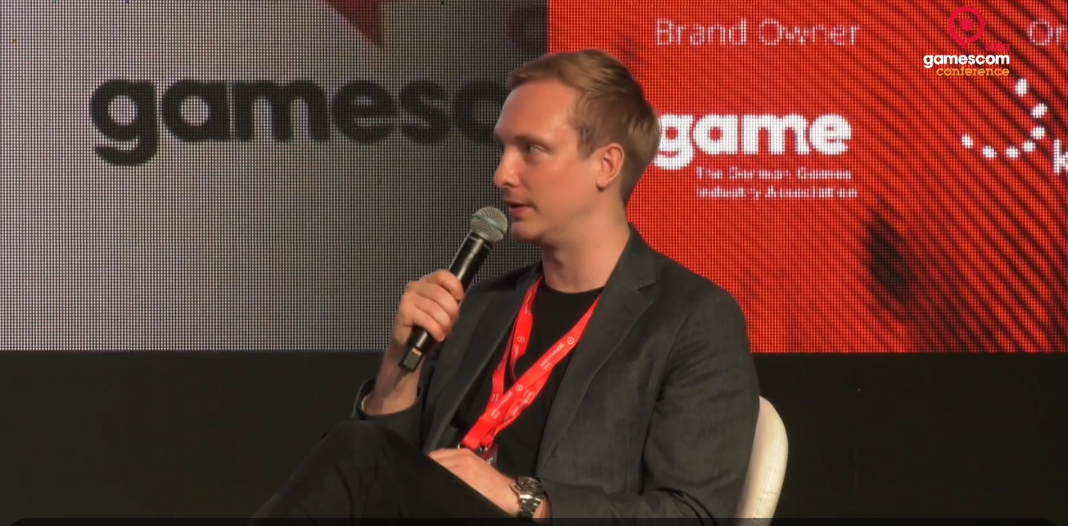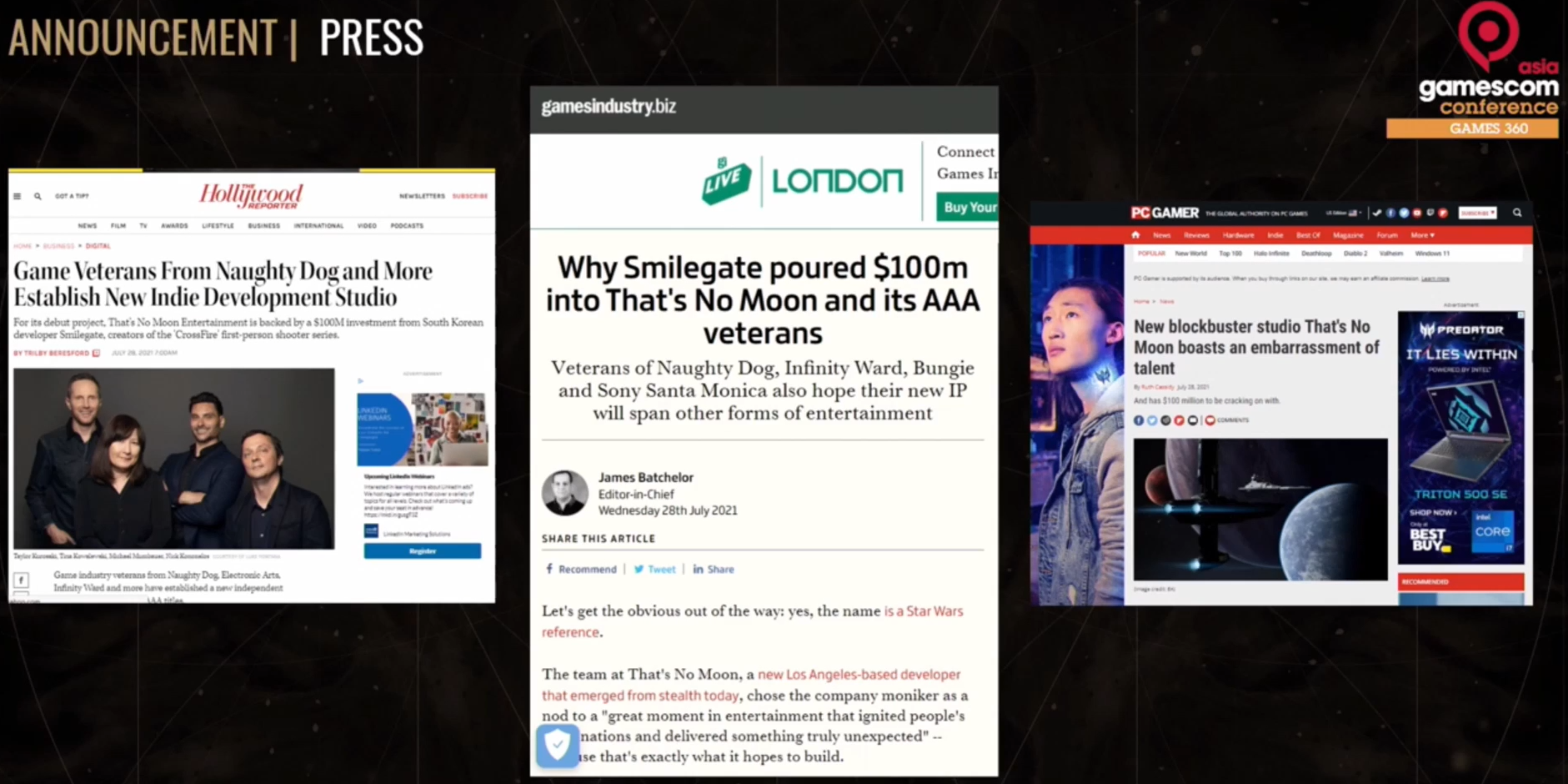Gamescom Asia 2021 | Top 5 Takeaways
I met with a ton of great folk, and well…took a lot of notes.
Between October 14th and October 17th, I "virtually" attended Gamescom Asia 2021, which took place in Singapore.
It held both an in-person for those who could make it as well as a virtual portal for attendees to watch the event and chat amongst each other.
I attended this event because I was curious to bring the Asia market research I've read from think tanks like Newzoo or Niko Partners to life. Who actually participates in the Asian gaming ecosystem? Which firms are in play? What trends are they seeing? What does the Asian gaming industry really mean - beyond bar charts highlighting its great growth trajectory?
Overall the event was amazing. Only 3 days, many of which were spent deep in the wee hours of Pacific Time evenings, but still amazing.
Seeing as this was one of the first major in-person events to be held in Singapore in quite some time, it was interesting to see the role that Government and service providers played at this event.
Anyway for those who couldn’t make it and are curious about what went down at the largest gaming conference in South East Asia - take a look at some of my takeaways below!
Also! Big thanks to the Gamescom Asia team for sharing the stats you see below about the event throughout this post. Over 2,200 people attended the event (virtual and in-person combined) and over 60 countries were represented!
🌎1) Localization is key
As I've shared in my Singapore Games Industry post, the South East Asian (SEA) games market as a whole is blossoming. For many AAA publishers looking to find their next group of players, SEA is very tempting. It's a young, high mobile adoption, high spend propensity geography that is deeply engaged with games and esports.
So what's important to succeed in the region?
When asked the question "why do you think games companies entering SEA fail?", Pontus Mähler from global games incubator, Global Top Round (think Y Combinator for games) said:
"Why do you think games companies entering South East Asia fail?"
"Because localization is hard. It's not just subtitle translation - it’s about hyper localization, ensuring players see themselves and their cultures in the game. Developers think that because they’ve launched games before, they can do it here in SEA - That's not the case - you need partners and expertise, it's way more complex than you think"
Pontus Mahler - Director of BD at Global Top Round
When there are 11 unique markets with different languages, religions, traditions, and values all bundled together in SEA, it is utterly foolish to bundle them all together as homogenized markets. It’s also incredibly difficult to do it in a way that doesn’t offend the markets you’re trying to service
Liam McClure, Head of Creative Strategy & Player Engagement Asia at Electronic Arts expanded on this idea.
“How does EA go about localization in South East Asia?”
"Localization is a key part of my job, but we go beyond localization and do “culturalization”. Localization focuses on language in-game, menus, subtitles, but beyond that it's about we show up as a brand and whether our players can see themselves within our titles.”
Liam McClure- Head of Creative Strategy & Player Engagement Asia at Electronic Arts
Was great to see so much geographic diversity at the conference, not just from Asia but globally!
So what does hyper localization look like? I chatted with Cabin Yim from FairPlay Studios in Thailand who shared the following examples:
Perfect subtitle translation, with cultural references, jokes, references all making sense in the target market.
In-game events that mirror real-world events in the target market, like a Diwali game event in India or a Songkran event in April for Thailand.
Partnering with local influencers and content creators to promote your game while incorporating feedback from them and your player base in that region.
Not everyone has the budget, time or, just work ethic to do these sorts of activities for 10+ unique markets. It's maybe why Liam at EA has found success because they have those enablers. It's also why smaller studios and publishers may struggle.
💰2) Venture Capital getting into games!
A lot of the conference was about how games can succeed in SEA, but what also stood out to me was how games were financed.
Michael Mumbauer from That's No Moon (great website BTW), a new studio recently established by games industry veterans who have worked on projects like The Last of Us and God of War (2018), shared the following slide.
He noted that that funding from established VC firms are entering the fray, willing to deploy capital to support proven game industry veterans looking to build the next best thing.
Venture Capital shops are warming up to the idea of putting money into game studios given how profitable games can be when done right. They are still very risky investments, similar to investing in a movie for example. I've only known about funds that supported seed or even pre-seed stage studios like Play Ventures and Global Top Round so perhaps an inflection point has been reached where the industry is too large for VC's to look away.
If you want to learn more about this growing trend - I recommend you check out this great piece from DigiDay.
Even more recently there are rumblings of VC’s looking at NFT backed games - which is a post for another day!
📱3) Social Media spend is more important than ever
Gamescom Asia 2021 boasted representation from all sorts of positions.
TikTok and Snapchat were both platinum sponsors of this event. They both had high-ranking BD individuals speak to the attendees about the benefits of using their respective platforms for marketing purposes.
The goal is to convince developers and publishers to deploy ad spend into these platforms, and although many marketing thought leaders at this conference advocated a diversified marketing strategy, where you put some money into Tik Tok, and some other dollars into Snap Chat let's say - I would imagine these BD reps would see it as a "winner take all" game
It's not risky to say that both TikTok and Snap are powerful marketing tools, whether that be for games or not. What struck me though was how similar the content between them was. See some examples below:
From what I've seen these pitch decks hit the same 6 beats:
Gaming is growing throughout the world at large
(Social Media Platform) is also growing
Gamers love (Social Media Platform) and are willing to spend on games/consoles as a result
How (Social Media Platform) delivers results throughout:
A games' product lifecycle
The Awareness/Consideration/Conversion marketing funnel
Best practices to create effective ads on (Social Media Platform)
Key Takeaways.
The clear takeaway is that when building a compelling marketing strategy for a game, social media platforms like TikTok or Snapchat are effective tools. Your players are on those platforms. they are willing to engage and buy product off those platforms - I get it. Let’s just have some more fun with the slides so that the attendees don’t suffer from Deja Vu! 😉
💰4) Agile Game Dev? Meet Agile Funding.
Just how games can be built in an agile framework, constantly delivering slices of a game every ~2 weeks via sprints, so too is game financing, at least on mobile. I chatted with Joseph Woo from Potato Play, a Singaporean-based studio famous for their Merge Quest title (iOS/ Android).
Joseph shared with me the importance of constantly testing game concepts very early on to see if there could be any market for it. Those quick and rapid tests are shared with investors who will determine whether they continue deploying capital. The moment a game idea starts testing poorly for whatever reason, it's scrapped and a new idea is spun up.
Keeping up development and funding velocity is crucial to deploying a low-risk, high success game to market. Something like 2048, or Flappy Bird is far from a polished product like AAA console games obviously, but the core gameplay loop is incredibly strong.
Just like how agile methodologies de-risk game development by preventing the team from going down long rabbit holes for months based on requirements that are no longer correct, this funding approach de-risks investors from doing the same with their money. It improves the odds that the game that eventually goes out the door is the best possible idea that was considered by the team. You could say the price of that security is the "wasted" dollars spent on unused ideas but conversely, the studio may never have stumbled onto that golden idea without the learnings from the scrapped ideas.
It's worth caveating that this approach is largely reserved for mobile currently. However, Joseph believes that it's bleeding into PC and even console games, more capital intensive, waterfall-esque projects.
💁♀️5) Allyship in games goes global!
"I remember feeling really weird when I joined the gaming & venture capital industry. I didn't know why I felt that way until I realized that I had gone a whole week without speaking to another female, only males.
Phylicia Koh - VP at Play Ventures
I was glad to see a dedicated day of the conference for Women in Gaming. The games industry has had some nasty stories in recent years around women having poor experiences working in the games industry. I find this disheartening for so many reasons not least of which is because women as gamers are being recognized more and more as players. Girls have grown up playing games and want to give back to this still relatively young industry only to be met with sexism, whether that be blatant or subtle.
I particularly enjoyed this panel because of its internationality. Most of the stories I've followed such as at Riot Games or at Activision Blizzard this past year were very western-centric. I was glad to learn more about the experience of being a woman in other countries like Malaysia which, Tomoko Choo, Studio Director for Larian Studios spoke to.
Quotes from the Panel
“I used to work in France, Japan, Singapore and now Malaysia and when I go to events, it’s very male dominant. But there a lot of women who approached me and asked if they would have careers as women. My answer is definitely yes”
“India is not very gaming focused as a culture. I had to prove to people that I was interested in gaming because I was a girl. I had to complete certain “tests” that my male colleagues would not have”
“Women in the Philippines are typically seen as the “responsible ones”, so to work in the gaming industry isn’t seen as very serious. It may be a hindrance to women entering gaming and we are struggling to change that in the Philippines.”
My takeaway was that sexism or just broad cultural pre-dispositions or perspectives on women in gaming either intimidate, demotivate or just outright prevent women from entering an industry they find to be meaningful. It looks a little bit different in each culture and some are further than others in curbing this issue but it’s still a battle courageously being fought around the world. Big thanks for the panelists for sharing their experiences. I've tracked a VOD down that you can watch on your own!
In Closing…
Despite being only able to attend virtually I really had a great time at Gamescom Asia 2021. Listening to so many great speakers, connecting with other attendees (the Hublio platform that was used online was perfect) and frantically trying to capture as much as I could at midnight pacific time for almost a week was a blast.
I hope that more people shift to in-person attendance as COVID develops over the next year and big thanks to the organizers for running such a smooth event! 🙂 🎉




















